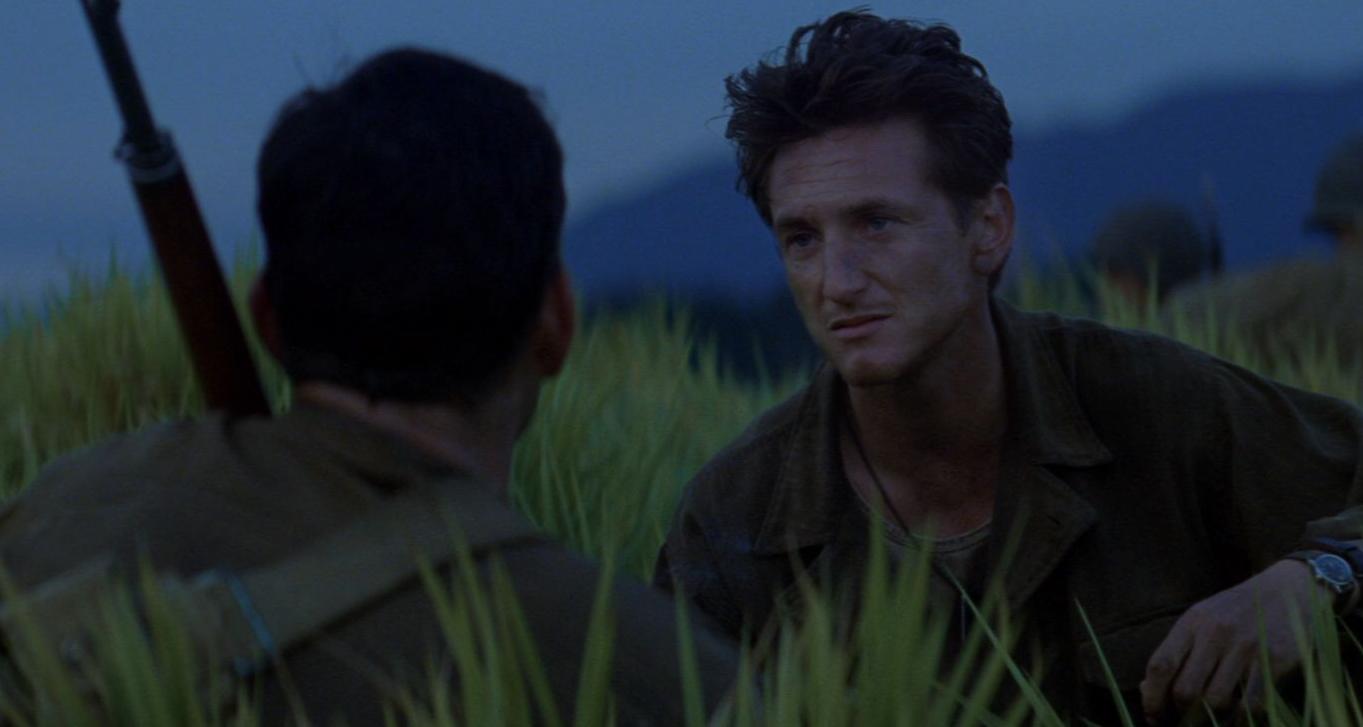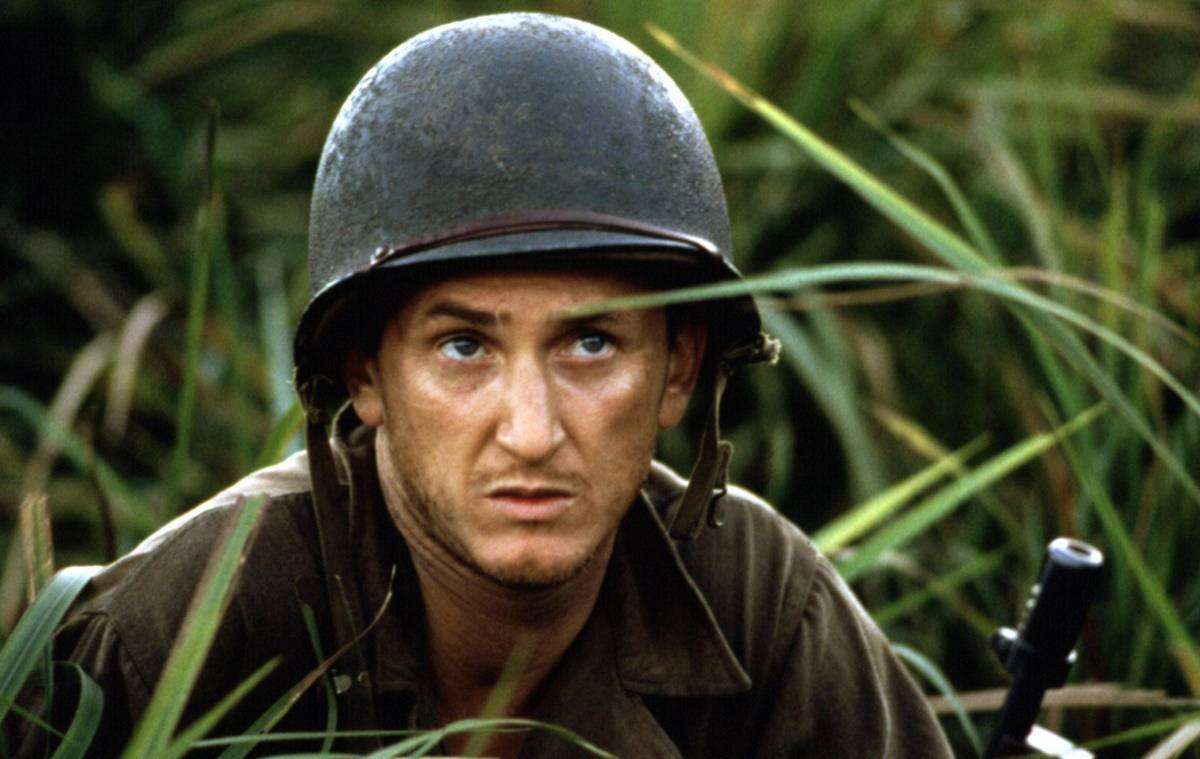4. What is Life All About?

Making films is quite expensive, even with the lowest of budgets (and Malick does not employ extremely low budgets). Creating films which express deep philosophies and personal thoughts is extremely dicey in the commercial marketplace. All hail Terrence Malick for so resolutely pursuing his muse in this manner. Make no mistake, this gamble has rarely paid off monetarily for him.
However, the deep intellectual thoughts of his films are among the components which give them lasting power. In the case of this film, stating that war is hell would be pretty obvious. Instead, the writer-director explores why war comes about and how those caught up in it will react for better and worse. He also examines what war does to the mind and spirit of the warriors.
Also, Malick seems to be stating that war is an affront to nature and all higher thought and spirit. Yes, such directors as Ingmar Bergman (notably 1968’s “Shame”) have pursued the same idea but in a much more overtly… well, “artistic” manner. This film puts those ideas into the context of a World War II drama and feels more naturally true to life without sacrificing the themes that are so important to the maker.
5. Stunning Cinematography, Set Design, and Score

All of the great filmmakers have known that the look of the film is of paramount importance. Malick’s films are always incisive and lovely, though often without calling attention to themselves in an overt manner. Though “Days of Heaven” may forever be the high watermark for Malick (and most others) in this regard, this film is also stunningly photographed, courtesy of Oscar-winning (though only nominated for this film) cinematographer John Toll. Toll is one of the great artists currently working in his profession.
This film captures the beauty of the setting and the ugly harshness of the war intruding upon it magnificently. The challenge was keeping both in focus. The film couldn’t be self-consciously pretty since it concerns an ugly subject, but the glory of nature had to continue to be present in order to contrast with that ugliness. Toll thus had to walk a pretty thin line himself. It took a true artist to pull it off but he succeeded.
Many viewers don’t register the glory of the natural images until thinking back on the film afterward since the war footage is so commanding. In this film, one side wouldn’t work without the other. A demanding artist such as Malick will only accept the best and Toll proved that he is among the best once more with this film.
Also in great company would be the famed set designer Jack Fisk (also a long time favorite of director David Lynch) who creates wonderful, authentic sets for the time and place, but more importantly, showcases the natural world which is so much a part of this film.
A third important collaborator is the celebrated composer Hans Zimmer. Scores are a vital part of a Malick film (who also uses classical music liberally in his films), especially in view of the sparse dialog characteristic of all of the director’s films. This score conveys the majesty of nature and the sadness of characters and with the general state of affairs with which the film is concerned. All three men prove most worthy peers.
6. An Amazing Cast

As stated, many, many people beat a path to the studio’s door when this project was announced. In fact, it almost seems like half of the younger actors then in Hollywood (the male half, understandably, under the circumstances) ended up in the film. Keep in mind, though, that the original script was very long, and apparently pretty much all shot, then edited (over an extremely long period of time) by Malick.
Many cast members found themselves with cameo parts (some may always have been cameos and some not). One telling fact is that future Oscar winner (for Roman Polanski’s 2002 film “The Pianist”) Adrien Brody was originally announced as the film’s main character and an exciting new discovery. Was he replaced with an also then-unknown Jim Caviezel? No, he’s still there, but for just a minute or two. Almost all of his footage was cut when Malick decided that another character and plot point was more compelling (which must have involve some difficult decision making).
The cast includes Sean Penn, Nick Nolte, Elias Koteas (all giving fine performances), Ben Chaplin, John C. Reilly, Jared Leto, Woody Harrelson, George Clooney, John Savage, and the man Malick had so wanted to star in “Days of Heaven” (Paramount said no), John Travolta. It’s a mark of Malick’s artistic dedication that some of the biggest stars (Clooney, Harrelson, and yes, Travolta) found that most of their roles landed on the cutting room floor (it would be great to see those outtakes, but Malick won’t allow that).
The acting in a Malick film rarely gets noticed (not one performance has ever been nominated for an Oscar, though many thought Jessica Chastain might well have been for 2011’s “The Tree of Life” had she not been nominated for that same year’s big hit “The Help”). However, some fine actors have delivered exactly what the director has wanted and needed, and never better than in this film.
7. The Maestro Himself

In the end, a Terrence Malick film is always exciting because it’s a film from Terrence Malick. While one might compare him to world-class directors such as Ingmar Bergman, Satyajit Ray, and (most closely) Andrei Tarkovsky, who in US cinema is like him?
Perhaps Stanley Kubrick compares best, but even he had a commercial streak which Malick seems to lack. This greatly intellectual man approaches his films as true works of art, and not in the deadly pretentious way that may sound. His films often compare to great works of art in other fields (such as the compositions in “Days” invoking Andrew Wyeth).
Even when a film doesn’t strike the viewer in the most positive way (and that happens a bit to his films), one knows that the film is no cheap piece of trash, even the enjoyable kind. These films are the works of a profound intellect who demands the best of those around him. “The Thin Red Line” did perplex some when it came out, but it has resonated with greater clarity with the years and, like other Malick works, will prove its worth with the passage of time.
Author Bio: Woodson Hughes is a long-time librarian and an even longer time student/fan of film, cinema and movies. He has supervised and been publicist for three different film socieities over the years. He is married to the lovely Natalie Holden-Hughes, his eternal inspiration and wife of nearly four years.